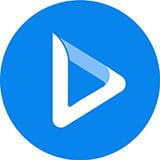
AI
Nowadays, presentations are firmly integrated into not only the academic but also the business world. They’re the perfect means whether you want to pitch your business or new idea, educate your audience, present reports, and the list continues.
The power of a well-made presentation lies in its logical structure and intelligibility. The human brain is much better at retaining structured, organized data — even more so when it’s presented with engaging visual content. Presentations check both boxes.
To ensure a cohesive flow for your entire presentation and a smooth ride for the audience, you need to prepare a clear, cogent outline for your material with all the key points. Moreover, structuring information is just as beneficial to the presenter as it is to the audience.
So, if you already have your presentation idea but are unsure of the right next step, a presentation outline is your answer. Once you have a general idea about the topic and have completed basic research, you’re in the perfect position to carve out the skeleton of your talk.
Below, you’ll find the basic structure of a balanced presentation outline as well as useful stats. Stick till the end to discover beautiful presentation templates.

Use this HTML code to share the infographic on your website:
<a href="https://www.renderforest.com/blog/presentation-outline"><img src="https://static.rfstat.com/bloggers_folders/895b96b7-c00a-4f39-89d8-0bacf49eed72.jpg" width="100%" alt="Presentation Outline Infographic" border="0"/></a><br/>Via: <a href="https://www.renderforest.com/blog/presentation-outline">Renderforest</a>
Recommended Reading
Here are a few more tips that will be of help when outlining and designing your presentation. If you’re looking for more presentation tips, check out our article on this topic.
Defining your presentation’s purpose is something that should be done before and not after you’ve planned your speech. To make sure that your presentation points build on one another, you need a single well-defined goal to unify them.
When you have a precise target to aim for, you’ll be able to build a much more strategic structure for your speech and the accompanying slides alike (if there’s going to be a slideshow). Knowing your purpose will also assist in specifying your approach to the topic. It could be an explanation, analysis, comparison, problem-solving, etc.
Always keep in mind that slides should only act as a supplement to make the data more vivid but never overpower the speaker. Don’t overload your presentation slides with too much text; otherwise, your audience will have to choose between reading the slides and listening to you. If you have difficulty remembering your text, use a script or sticky notes as support for your speech.
Choose your first slide wisely, as it’s the starting point that will attract the attention of your audience and the new slides should add up to it by keeping them engaged.
The 10-20-30 rule of the PowerPoint presentation suggests having 10 slides, delivering the presentation in around 20 minutes, and keeping your fonts no smaller than 30 points. Follow these guidelines only as far as they make sense for your pitch.
You can create attractive presentations with slideshow video templates free of charge. Plus, they take no longer than a few minutes to edit. Here are a few examples:
 |
 |
 |
Conclusion
Think of a presentation outline as the spine that holds your pitch together from its first step to the very end. An outline provides a solid structure to your material, making the information much easier to grasp and memorize.
Begin your talk with an introduction to yourself and the topic, cover the main points one by one, and weave all the strands together with a brief conclusion. If appropriate, set a certain amount of time aside after the presentation to answer your listeners’ questions. Best of luck!
Sources: Thompson Rivers University Library, University Writing Center, Stanford Graduate School of Business, Virtual Speech, Visme, Duarte
Article by: Renderforest Staff
Dive into our Forestblog of exclusive interviews, handy tutorials and interesting articles published every week!
Read all posts by Renderforest Staff
![A Guide to Presentation Outline [Infographic]](https://cdn.renderforest.com/website/blog-media/2ef445d4-d48b-49f5-9a35-8c98710b5271.jpg)
